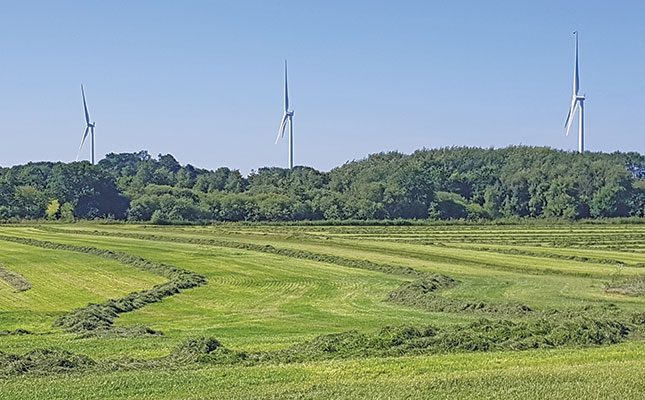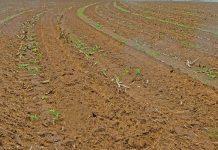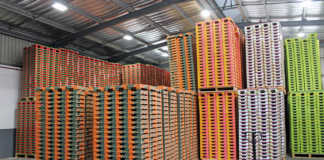
Photo: Lindi Botha
What is green financing?
Key policy measures around the globe are being implemented to reach Net Zero, where the amount of carbon emitted is equal to that being sequestrated, so that global warming will slow down.
Countries around the world have committed to time frames and reduction rates for carbon emissions, with the EU having of the most stringent targets.
READ Green hydrogen: a win for SA and the world
This is important because the EU is a vital market for South African agricultural products, and the carbon footprint of farmers in South Africa will play a role in how their produce is accepted in the EU.

South Africa too has committed to reaching Net Zero by 2050. Local and international pressure to align all business practices to this goal is therefore increasing.
Banks for example, therefore need to take into account the emissions of their clients and potential clients as it impacts their sustainability.
To understand the process of a financier to a carbon neutral status, a distinction can be made between Scope 1, 2 and 3 emissions.
Scope 1 and 2 emissions are those that we emit from our operational footprint. Scope 3 emissions, in turn, are emissions from the third parties/clients that we finance.
Scope 3 emissions, from an agricultural financing perspective, therefore come from the carbon or carbon equivalents that are emitted through the agricultural production processes or investments that we finance.
Sources of emissions in agriculture can broadly be broken down into five categories:
- Emissions from energy use – specifically related to fossil fuels
- Change in land use
- Emissions from synthetic fertiliser use
- Methane emissions from animals, in the case of livestock
- Emissions from waste management.
As the world works to reduce emissions, green financing has been developed to encourage reductions. Financiers engaging in green financing have a key role to play in channelling capital or extending credit to environmental initiatives.
Ways to achieve this could include offering better credit conditions for clean energy projects, the creation of innovative financial products that reward agricultural producers with good environmental practices, and market expansion through the dissemination of information about the benefits of clean energy.
Is this an Absa-specific initiative or will all banks start scrutinising carbon footprints and reward low emitters?
In 2019, the UN developed the principles of responsible banking (PRB) to which more than 100 banks around the globe are signatories.
According to these principles, signatory banks commit to aligning their strategy and practice with the vision as set out in the UN’s Sustainable Development Goals and the Paris Climate Agreement.
READ This is how carbon policies can prevent food insecurity
Absa is also a signatory to these principles and, as such, we have committed to start disclosing our impact on the environment and society at large.
One of the variables that we have committed to disclose is carbon emissions. As a signatory of the PRB, Absa committed in 2023 to reduce its carbon emissions by 50% by 2030 and to be carbon neutral by 2050.
We therefore have a dedicated unit and associated specialists that advise clients in primary agriculture and the rest of the value chain on investments in renewable energy sources.
Would emission measurement be a requirement for such financing, and how fully developed are the measurement tools?
Although the tools for measurement and reporting of emissions like electricity, fertiliser use and waste variables have not been fully developed and integrated into agricultural or financial systems, experts agree that agricultural producers, would at some point in the future, need to start reporting on these variables.
Understanding one’s carbon footprint is one of the important first steps in setting a broader environmental, social, and governance (ESG) strategy and managing a broader risk profile.

To enable farmers to play their part in climate mitigation objectives, they first need to understand and measure their footprint.
This will then provide a baseline from which farmers can work to reduce carbon emissions and receive cost benefits from service providers that can reward them for responsible and sustainable production.
Products with an export focus are likely to be required to report on their carbon footprint in company reports and on food labelling in the near future.
Additional audits bring extra costs for farmers. Can the sector afford this?
Commercial banks are fully aware that additional reporting and auditing requirements present capacity and cost challenges to agricultural producers, especially for small and medium-scale enterprises.
But the increasing array of technology that helps farmers measure and report will make it easier.
Precision digital technology, such as remote sensing for example, is being explored to see how financiers can leverage production data to access and validate the information that can facilitate the calculation of a producer-specific carbon footprint.
Two of the main components of carbon emissions, from a farming enterprise, come from tractive power and chemical and synthetic fertiliser use.
A case can therefore be made that tools that result in efficiencies in these categories, are key in the journey to reach climate-related goals such as the reduction of carbon emissions.
Further to this, remote sensing technology, integrated with a precision farming system, would help with capturing and validation of input use data. This data underpins the calculation of a carbon footprint for a farming enterprise.
Third parties, who are off-takers, financiers or insurers of agricultural producers, would, in turn, be able to draw on this data to report on their Scope 3 emissions.
READ Moving from fossil fuels to renewable energy
This is also data that would be required to unlock ‘green opportunities’ available to the agriculture sector as custodians of natural resources with many sustainability practices already in place.
Such green opportunities include but are not limited to green finance, where favourable rates support the use of nature-positive production practices, lower insurance rates and additional revenue streams such as the sale of carbon credits.
Beyond this, remote sensing, with associated crop modelling capabilities and short-term weather forecasting modules, unlocks opportunities for production finance and early warning systems in terms of climate.
It should also be noted that although these examples are centred on a carbon discussion, remote sensing could also be leveraged to monitor and unlock opportunities related to other critical ESG factors.
This includes natural capital and biodiversity, financial inclusion and water use efficiency.
Where do the greatest opportunities lie for farmers in terms of green financing?
Farmers need to ‘know and show’ to unlock opportunities. Once they have built up carbon footprint data it will be easier to access financing with more favourable rates, or even receive grants for climate mitigation or adaptation projects.
To qualify for a grant, however, an applicant would need to provide assurances in terms of a green classification to unlock the opportunity.
Carbon trading is a hot topic in terms of an additional revenue stream, since agriculture is one of the few sectors that both emit and sequester carbon.
To unlock the opportunities associated with this, carbon measurement over time would be required to show carbon capture.
Lastly, with the way in which climate policies are moving, the opportunities will lie in retaining market access or gaining greater market access for products with a low environmental impact.
Climate issues are something we can no longer ignore and they need to always be part of our conversations and business practices.
Email Marlene Louw at [email protected].












